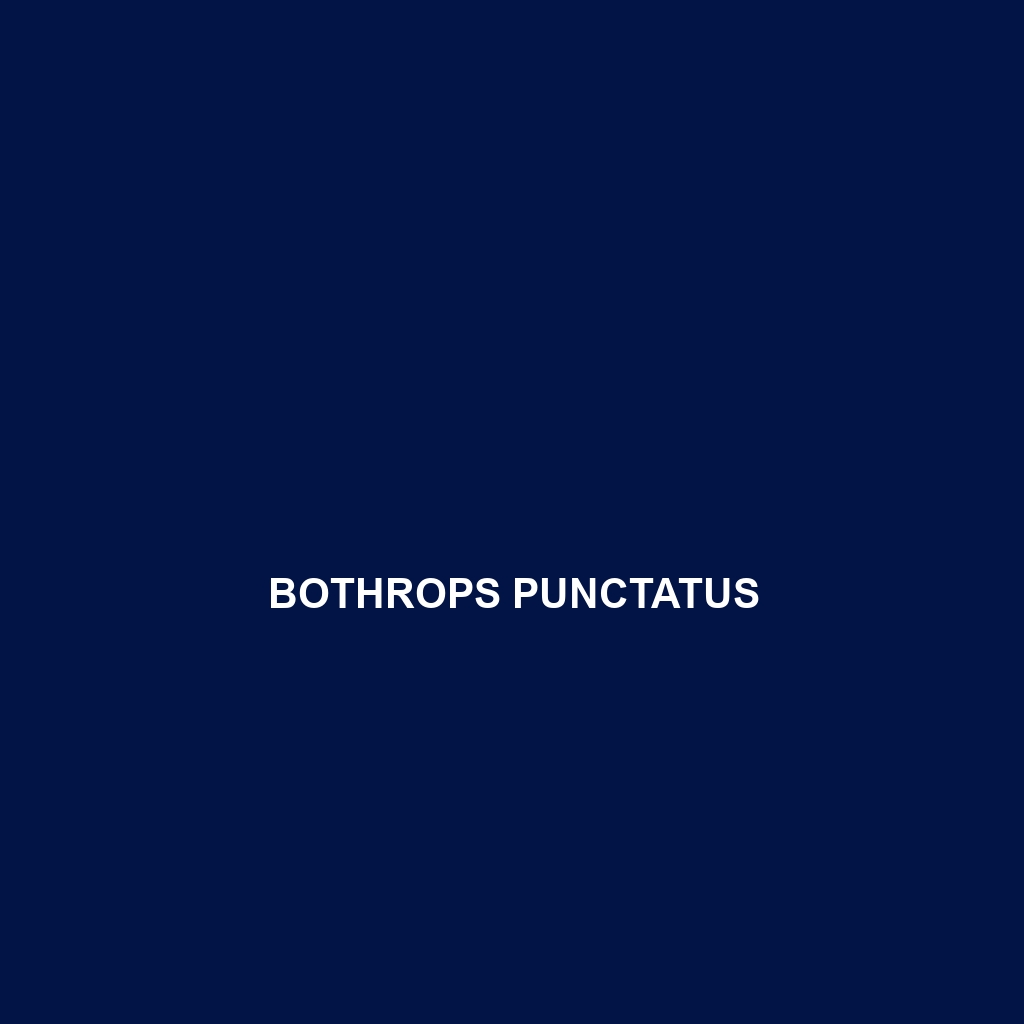Bothrops punctatus: An Overview
Common Name: Bothrops punctatus
Scientific Name: Bothrops punctatus
Habitat
Bothrops punctatus, commonly known as the common fer-de-lance, is primarily found in the tropical regions of Central America, particularly in countries such as Honduras, Costa Rica, and Panama. This species favors moist environments, often residing in lowland rainforests, shrublands, and sometimes in agricultural areas close to native vegetation. These snakes thrive at elevations ranging from sea level to around 1,200 meters, where humidity and temperature conditions are conducive to their survival.
Physical Characteristics
Bothrops punctatus can reach lengths of up to 1.5 meters (approximately 5 feet), although some individuals may grow larger. They exhibit a distinctive pattern of dark brown or gray scales, featuring prominent triangular markings along their body. The head is notably broad and triangular in shape, which is characteristic of pit vipers, and they possess a pair of heat-sensing pits located between their nostrils and eyes. This adaptation helps them detect warm-blooded prey.
Behavior
Bothrops punctatus is primarily nocturnal, hunting during the night for food. They are known for their aggressive behavior when threatened. These snakes often remain motionless, camouflaging themselves against the forest floor, which enables them to ambush unsuspecting prey. Their ability to deliver a potent venom makes them formidable predators in their ecosystem.
Diet
The diet of Bothrops punctatus primarily consists of small mammals, birds, and amphibians. These snakes are ambush predators, relying on their excellent camouflaging abilities and quick strikes to capture prey. They utilize their hemotoxic venom to subdue their victims, allowing for easier consumption. Their feeding habits vary with the seasons, often becoming more active during periods of high prey availability.
Reproduction
Bothrops punctatus exhibits viviparous reproduction, meaning they give birth to live young rather than laying eggs. Breeding typically occurs during the rainy seasons, which provide favorable conditions for survival. A female can give birth to a litter of 10 to 30 offspring after a gestation period of approximately 5 to 6 months. The young are around 30 cm (about 12 inches) long at birth and are independent from birth.
Conservation Status
Currently, Bothrops punctatus is classified as vulnerable due to habitat loss and fragmentation caused by agriculture and urban expansion. Conservation efforts are necessary to protect their natural habitats and maintain biodiversity within their ecosystems.
Interesting Facts
One fascinating fact about Bothrops punctatus is that they can vary significantly in coloration based on their habitat. Some individuals may exhibit more vibrant colors in humid, dense forests, while others become more subdued in drier environments. Additionally, their venom contains anticoagulants, which help in subduing prey and prevent blood clotting, making them effective hunters.
Role in Ecosystem
Bothrops punctatus plays a crucial role in its ecosystem as both a predator and prey. As a predator, it helps control the populations of small mammals, thereby maintaining ecological balance. Additionally, it serves as a food source for larger predators, including birds of prey and larger snakes, contributing to the food web and promoting biodiversity.
